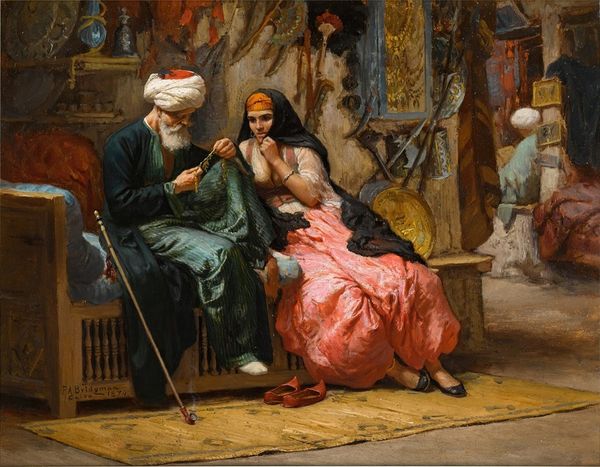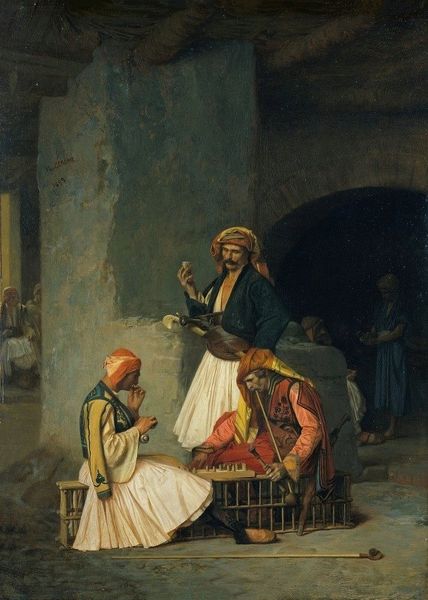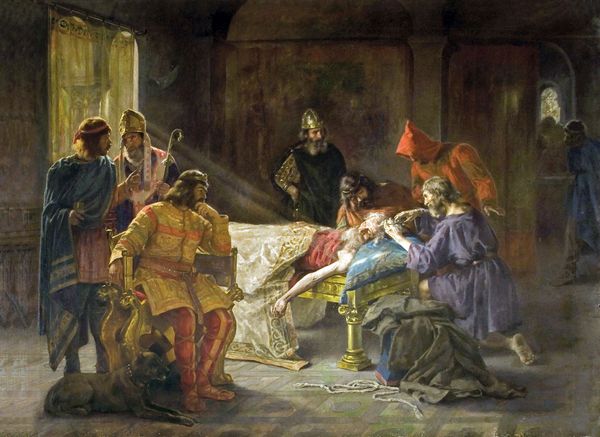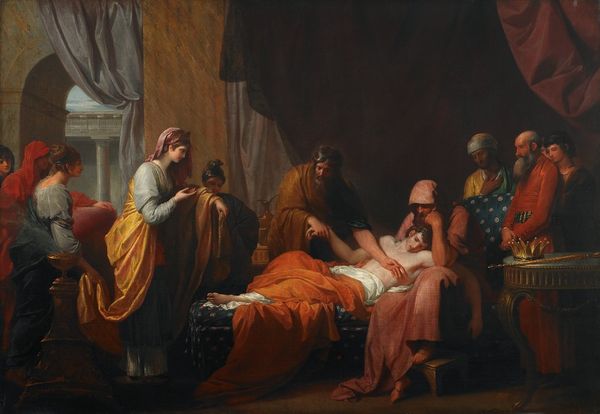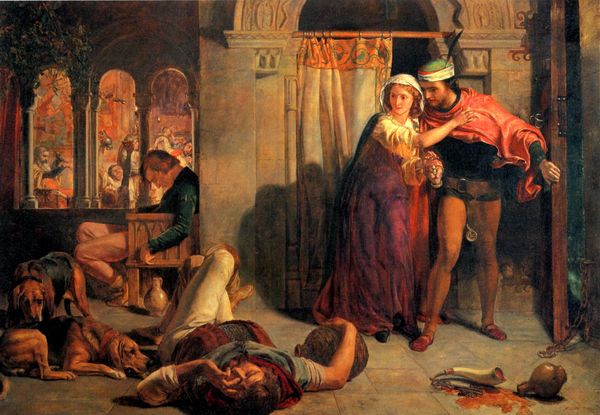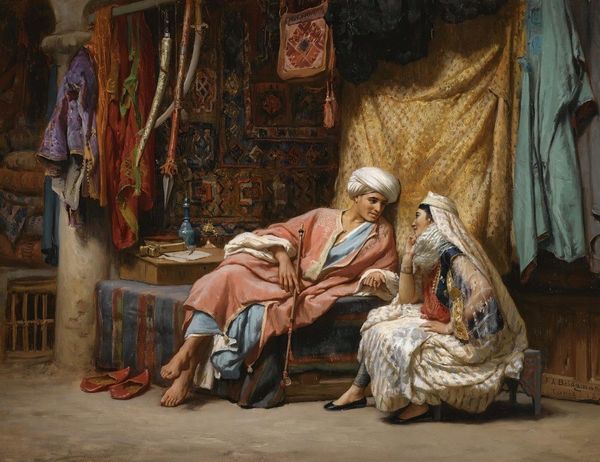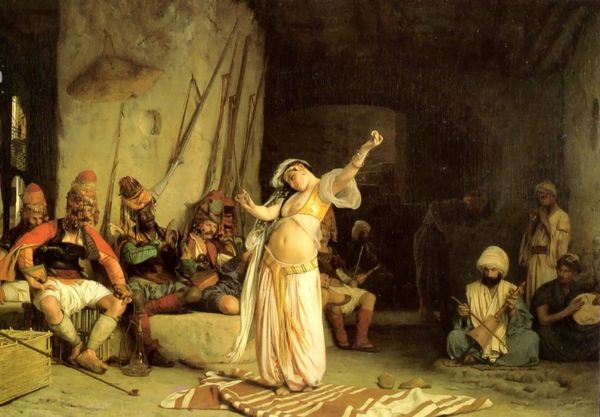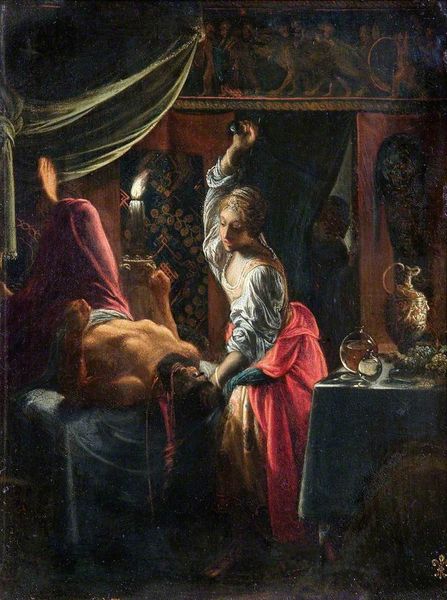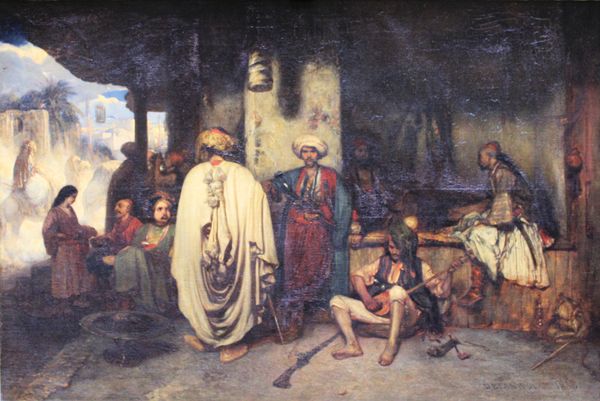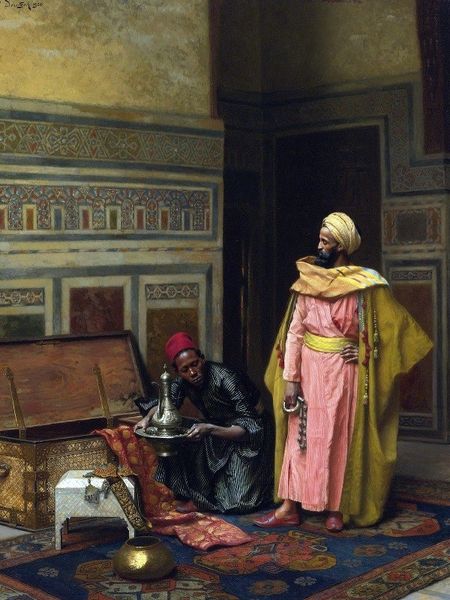
Copyright: Public domain
Editor: Here we have Jean-François Portaels' *The Slave Market* from 1853, rendered in oil on canvas. It strikes me as…well, deeply unsettling in its composition. What do you see in this piece, Professor? Curator: Beyond the obvious depiction of a transaction, I see a layering of gazes, each carrying a distinct weight. Notice how the figures’ eyes, or lack thereof, direct our interpretation. The woman being presented, her gaze averted, embodies a loss of agency. This pose is a common symbolic convention for both sexualizing and de-personalizing women throughout art history. Does anything else catch your eye about these characters and poses? Editor: I’m struck by the men – some seem contemplative, others…calculating. And then there are objects such as the prayer beads, turban, hookah… Curator: Precisely. Each object is a signifier. The prayer beads, the hookah – these are markers of cultural identity and status. However, placed within the context of a slave market, they also become implicated in the justification of this commerce. They carry cultural memory. What emotional reactions are conjured as we look at these seemingly disparate elements held together in one space and time? Editor: I see. They’re symbols, almost alibis. Like they’re trying to normalize the whole scene. Curator: Indeed. Portaels is not merely depicting a scene; he is constructing a commentary, one layered with both exoticism and ethical questions. It leaves the modern viewer questioning whether or not this image helped perpetuate dehumanization, while simultaneously acting as a symbol that it happened. It’s not a question with an easy answer. Editor: This makes me look at it in a totally new way, especially concerning all the symbols and how people might see this today, versus then. Curator: Absolutely. By analyzing the symbolic language of this work, we can begin to grasp the complex dialogue between the past and present, as we continue to make collective meaning and memorize this image as an artifact from the past.
Comments
No comments
Be the first to comment and join the conversation on the ultimate creative platform.
